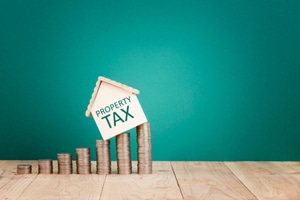Please fill out the details below to receive information on Blue Wealth Events
"*" indicates required fields

Property investment is a common topic around the water cooler throughout Australia, but an important aspect often overlooked, or frequently misunderstood is the concept of land tax. Surprisingly, land tax can be a factor that ruins an investors cashflow if not accounted for properly. Although your investment strategy should not be based solely around tax, it should be understood before you pull the trigger on a major investment.
What is Land Tax?
In broader terms, it’s a tax charged on any land you own or co-own. This is levied every year you own a property and rises with the value of your asset. This includes vacant land you’ve bought to build on, or the land on which the house or unit you’ve bought is already built. Generally, the only property that will be exempt from this tax is your principle place of residence.
How is land tax calculated?
Your payable Land Tax is determined by the unimproved value of all liable property you own. This ‘Unimproved value’ of land is the value of your land with no completed construction on the lot as calculated by the valuer general.
Once the value of your land passes a minimum threshold (similar to income tax), you’re charged a base sum plus a dollar or percentage amount for every dollar of your land’s value above the threshold. This tax is charged by the state revenue office that the property is located in. Each state and territory have different rates and thresholds, so it’s important to understand how this can impact you as an investor. Over capitalising on a single market, without understanding the relevant thresholds or rates can heavily restrict your yearly cashflow after June 30.
How can I minimise land tax in my portfolio?
Investors can take advantage of the thresholds by diversifying their portfolio of property investments across different states. By diversifying your property portfolio throughout different states, you may maximise returns and minimise payable tax. The example below highlights just how effective this exercise can be over a multiple property portfolio.
Investor 1 doesn’t understand land tax and opts to buy the following properties all in the same state:
NSW jurisdiction allows for a $692,000 threshold for land tax meaning that Investor 1 will incur ($1,400,000 – $692,000) x 1.6%. This equates to over $11,300 in tax for the property owner per annum.
Investor 2 understands that land tax is an important aspect of investing and diversifies his property portfolio to leverage off the taxation system:
All of the above are below the taxable threshold within their respective states and territories. As a result, Investor 2 pays 0% land tax on an identical landholding. Over a decade-long hold period, this decision will create a $113,000 difference in costs between the two.
Education is key to effective investing and at the end of the day it pays to align yourself with industry professionals. At Blue Wealth our research focused approach allows our clients the best opportunity for long term growth. To give yourself the best chance to navigate Australia’s dynamic property market, get in and see Blue Wealth today.
